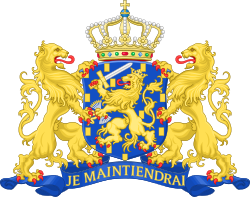Cort van der Linden cabinet | |
|---|---|
| Cabinet of the Netherlands | |
 Meeting of the Cort van der Linden cabinet | |
| Date formed | 29 August 1913 |
| Date dissolved | 9 September 1918 (Demissionary from 2 July 1918) |
| People and organisations | |
| Head of state | Queen Wilhelmina |
| Head of government | Pieter Cort van der Linden |
| No. of ministers | 12 |
| Ministers removed | 5 |
| Total no. of members | 10 |
| Member party | Independent Liberals (I) Free-thinking Democratic League (VDB) Christian Historical Union (CHU) Liberal Union (LU) Economic League (EL) (Confidence and supply) |
| Status in legislature | Centre Minority government |
| History | |
| Elections | 1913 election 1917 election |
| Outgoing election | 1918 election |
| Legislature terms | 1913–1917 1917–1918 |
| Predecessor | T. Heemskerk cabinet |
| Successor | First Ruijs de Beerenbrouck cabinet |
| Part of the Politics series |
 |
|---|
| |
The Cort van der Linden cabinet was the cabinet of the Netherlands from 29 August 1913 until 9 September 1918. The cabinet was formed by Independent Liberal Pieter Cort van der Linden after the election of 1913 and received confidence and supply in the House of Representatives from other Independent Liberals and several members of the Free-thinking Democratic League (VDB), Christian Historical Union (CHU) and the Liberal Union (LU) and from 15 December 1917 also the Economic League (EL). The centre cabinet was officially a minority government in the House of Representatives but was also supported by additional members of the Anti-Revolutionary Party (ARP) for a majority. It was the last cabinet with a Liberal Prime Minister until Mark Rutte became Prime Minister 92 years later on 14 October 2010. [1]











